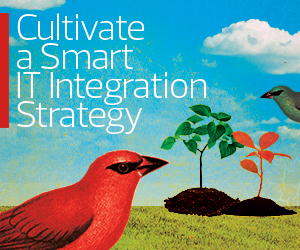2. Data Integration Should Be an Early Consideration
Patient data could unlock the potential of early diagnostics and preventive care using artificial intelligence. However, healthcare data often is siloed and data entry in the electronic health record is inconsistent. In healthcare, inaccurate data can put lives at risk.
“It has become a big challenge for the healthcare industry,” says Venkataraman Chittoor, chief product and technology officer at Marathon Health. “When migrating two systems, we need to plan how it is used and mapped, and how to recognize data issues.”
Healthcare IT leaders should consider the impacts and details of data integration early in the M&A process.
“It’s not just moving data between columns. It needs to be a comprehensive migration. Data exchanges and storage have been a big challenge for healthcare companies, but they are making a lot of progress in catching up,” says Chittoor.
3. Partnerships Are Important to Navigating IT Integrations
Healthcare and IT leaders are experts in their fields, but every merger or acquisition comes with its unique challenges. Expert guidance from a partner that has healthcare M&A experience can make the integration process easier and smoother.
Involving an IT partner with knowledge and experience specific to healthcare mergers and acquisitions can help organizations meet the demand for scale, especially with larger integrations. An expert partner, for instance, understands that thousands of endpoints are involved in clinical operations.
It’s important to involve a partner as early in the M&A process as possible, ideally before a public announcement has been made, so the partner understands the organizations’ business and IT integration objectives from the beginning. A partner that is in place before day zero can perform unbiased assessments sooner and make sure security is central.
4. Cybersecurity Shouldn’t Be an Afterthought in a Healthcare M&A
Cybersecurity is the top IT pain point for 38 percent of health IT leaders surveyed in a recent HealthTech Twitter poll. With cyberattacks growing more sophisticated and healthcare organizations remaining a primary target for bad actors, cybersecurity should be top of mind throughout the entire merger and acquisition process.
#HealthIT leaders: What is your biggest IT pain point during a #merger or #acquisition?
— HealthTech Magazine #BeCyberSmart (@HealthTechMag) July 11, 2022
It’s important for IT leaders to understand the security infrastructure and gaps of both organizations so they can navigate the integration process without putting either organization at risk from increased vulnerabilities.
“We do a cybersecurity review, assess everything and fix concerns before we connect the acquired network to ours,” says Lehigh Valley Health Network CIO Mike Minear.
5. Due Diligence Is an Opportunity for IT Information Gathering
During due diligence, the buyer conducts a thorough process of investigation, verification and auditing of the target healthcare organization to identify risks and confirm information. While much of the focus may be on finances, it’s also important for organizations to consider IT environments.
Three things healthcare CIOs and IT leaders should keep in mind during the M&A due diligence phase are:
- IT leaders need a thorough understanding of both healthcare organizations’ IT environments, including security gaps and technical debt.
- Stakeholders should align on the IT integration strategy early, as integrations will move quickly once the deal is closed.
- Organizations should foster collaboration between IT teams and healthcare leadership to ensure that everyone is aligned and able to make decisions with future efficiencies in mind.
Want to learn more? Click the banner below to effectively integrate your health IT environment.












